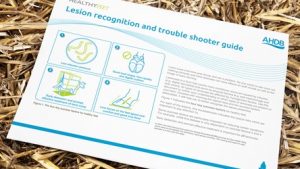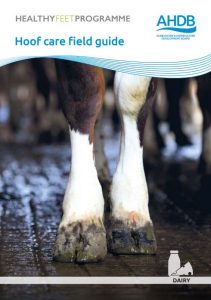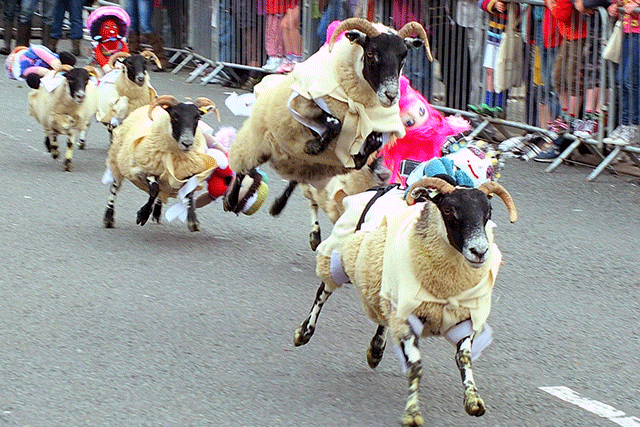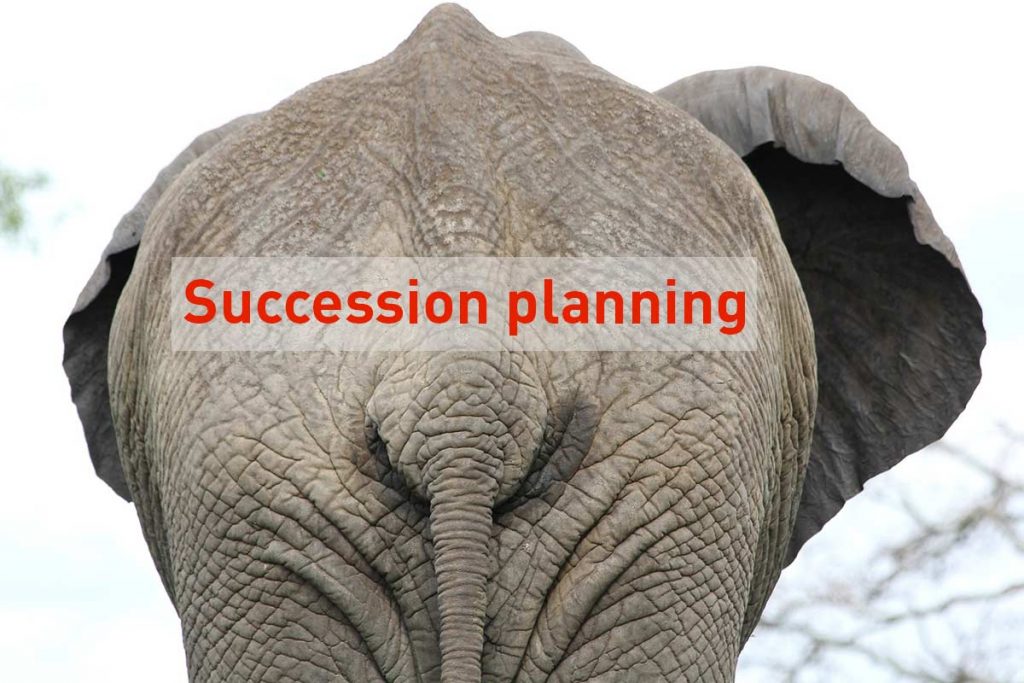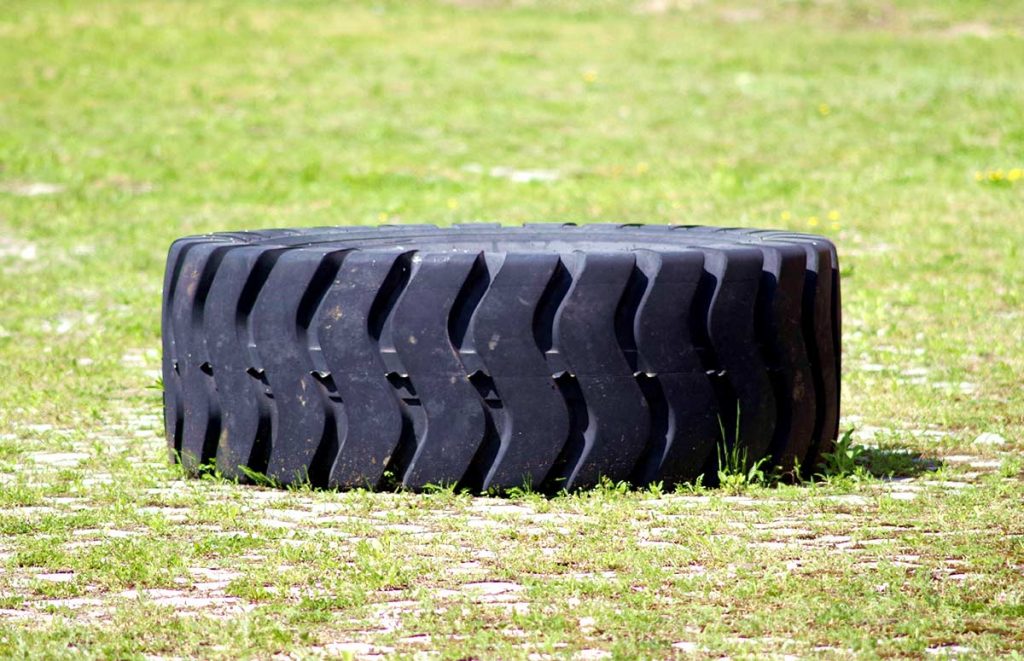Includes the following conditions: Digital Dermatitis, Foul-in-the-Foot, Hock Damage, Hygroma, Joint Ill, Laminitis, Septic Arthritis, Slurry Heel, Sole Ulcer, Super Foul, White Line Abscess
Cattle lameness
The Healthy Livestock project looked at improving the rate of lameness in south west dairy herds. The project’s approach incorporated group awareness events and workshops, and one to one time with the farm vet and mobility scorer.
At the beginning of the project, an average of 23% of cows within a herd were found to be lame. The percentage of lame cattle within herds ranged from 1% to 73%. However, at the end of the project, lameness within a herd fell to an average of 19%, ranging from 3% to 59%, indicating that was a trend toward improved lameness.
Potential risk factors
Herd size
Findings indicated that smaller herds had a higher initial mobility score, a pattern supported by Groehn et al. (1992) who found that smaller herds had the highest frequency of lameness. Conversely, Alban (1995) indicated a greater frequency of lameness in larger herds. Alban suggested that as more procedures are mechanised on larger farms the farmers contact with each cow is reduced as a result and this impacts on lameness.
Breed of cattle
Although the majority of herds involved in the project were comprised of Holstein Friesian and Holstein Friesian crossbreeds, where there were other breeds within a herd a lower level of lameness was observed. These findings concur with other recent studies e.g. Barker et al. (2010).
Farming system
Results also suggested that there were lower levels of lameness in organic herds. This finding is similar to that shown by Rutherford et al. (2009), who suggested differences between organic and non-organic herds were potentially a consequence of the way lameness management is approached, with organic farms often adopting proactive husbandry measures as opposed to reactive treatment.
Housing
Housing was also found to be a risk factor with cattle housed within free-stalls or cubicles shown to be under a greater risk of lameness than those housed in straw yards.
References
Alban, L. (1995) Preventive Veterinary Medicine, 22, 13-225
Barker Z. E., Leach, K. A., Whay, H. R., Bell, N. J., & Main, D. C. J. (2010). Journal of Dairy Science. 93, 932–941 DairyCo, 2013. http://www.dairyco.org.uk/technical-information/animal-healthwelfare/lameness/husbandry-prevention/mobility-scoring/
García-Muñoz, A., Singh, N., Leonardi, C. and Silva-del-Río, N., 2017. Effect of hoof trimmer intervention in moderately lame cows on lameness progression and milk yield. Journal of dairy science, 100(11), pp.9205-9214.
Groehn, J.A., Kaneene, J.B. and Foster, D. (1992) Preventive Veterinary Medicine, 14, 77-85.
Rutherford, K. M. D., Langford, F. M., Jack, M. C., Sherwood, L., Lawrence, A. B., & Haskell, M. J. (2009) The Veterinary Journal. 180, 95–105.
Lameness was defined as 1 week with a locomotion score of 3 or above or 2 consecutive weeks with a locomotion score of 4 or 5 (severe lameness).
Between 52 and 93% of cows were lame at any one time during the study period meaning substantial resources are required to treat lameness within herds.
Majority of cases of lameness were a week in duration and represented repeat cases
Previous lameness events
- 79-83% of lameness could be related to previous lameness events.
- Contribution of previous lameness events decreased with time, but remained significant
- It can take a long time to recover from lameness
- Factors associated with lameness/repeated cases of lameness:
- Longer time spent with the herd
- Animal based factors
- Environmental factors
- Prevention of first lameness incidence
- It is not clear whether the first lameness event or other factors are the main influencing factor for repeat incidence of lameness.
- It is possible that irreparable anatomical changes occur to the foot with lameness-causing claw horn lesions resulting in increased risk of re-occurrence.
BCS
- Increasing body condition scores by 0.5 could potentially prevent 4% of lameness cases.
- Severe lameness can be avoided in 8% of cases by preventing the BSC falling by 0.5.
- The effects of BCS were relatively small when compared to the impact of previous lameness events.
- In herds with limited repeat lameness, BCS should be considered when looking to further reduce lameness incidence.
Reference
Randall, L.V., Green, M.J., Green, L.E., Chagunda, M.G.G., Mason, C., Archer, S.C. and Huxley, J.N., 2018. The contribution of previous lameness events and body condition score to the occurrence of lameness in dairy herds: A study of 2 herds. Journal of dairy science, 101(2), pp.1311-1324.
External resources
This guide from AHDB will help you identify foot conditions associated with lameness early and to provide effective treatment.


